Food can reflect culture, but can food also reflect history?
That was what Lee Chi-lin (李其霖), associate professor of history at Tamkang University (淡江大學) wanted to explore when he gathered historians, local officials and culinary enthusiasts at the Tamsui Red House (淡水紅樓), an exquisite red-brick Taiwanese cuisine restaurant built in 1899.
Lee planned the menu to reflect the historic Qing victory over the French in the Battle of Tamsui, also known as the Battle of Hobe (滬尾, Tamsui’s old name).
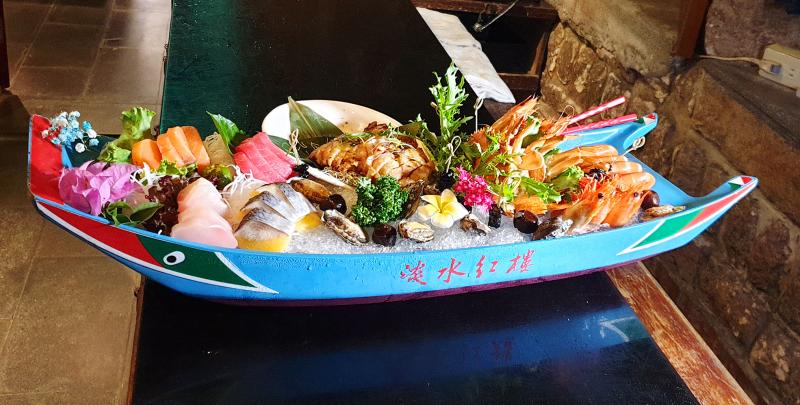
Photo: Katy Hui-wen Hung
On Aug. 23, 1884 war had broken out due to a territorial dispute in Vietnam between the French and Taiwan’s Qing Dynasty overlords.
After capturing Keelung, French warships appeared just outside Tamsui in early morning of Oct. 2 and bombarded the port. The French Fusiliers Marins launched a ground assault on Oct. 8, but defending forces drove out the invaders in just four hours.
The French defeat played a significant role in the Qing’s recognition of the strategic importance of controlling Taiwan and the imperial decision to separate Taiwan from Fujian as its 20th province in 1885.
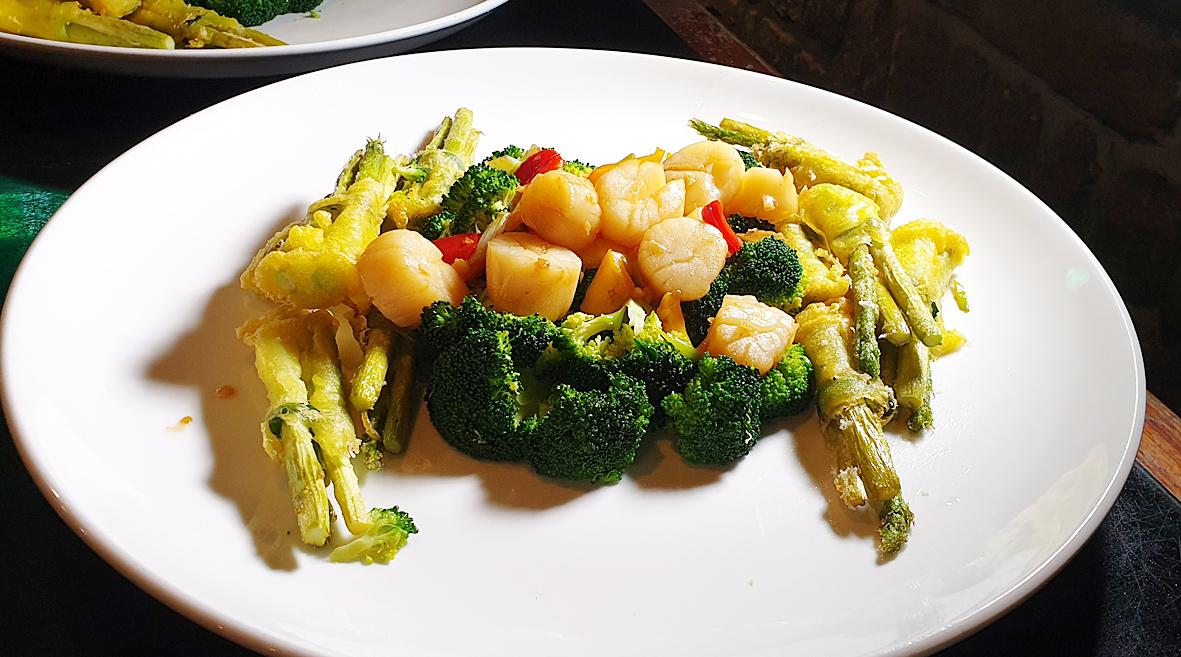
Photo: Katy Hui-wen Hung
Lee’s 10-course menu illustrated significant aspects of the event. In battle storytelling fashion, Lee described each dish before it was served on the tables. However, gastronomic concerns over the order of the dishes took preference over the exact chronology.
Dish 1
“Reveille:” The call to battle begins with a beautifully decorated local seafood boat. The French coveted the port of Tamsui, regarded as a stronghold of maritime trade since the 17th century. Heavily armed, the invaders are represented by a large crab. The Qing, poorly equipped but numerous, are the smaller prawns. And an uninvited Japanese admiral, Heihachiro Togo, watches while eating sashimi on the battlecruiser Amagi. Black beans and iron eggs (a Tamsui specialty) depict planted spies, including a British pilot named Bentley, who went by the Italian name Carozzi.
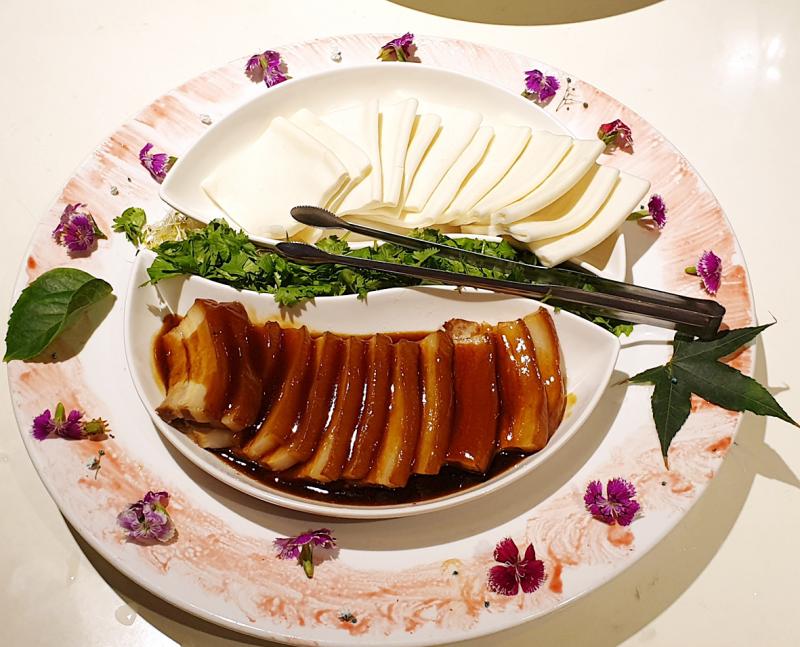
Photo: Katy Hui-wen Hung
Dish 2
“Hobe Coastal Defense:” The local effort to fend off the invaders is presented by a mixed vegetable dish cooked with the popular French ingredients of scallops and asparagus. The asparagus tempura is arranged to resemble the 2km to 3km long fortification that locals built for the Qing army. Broccoli represents the grassy path to the battlefield and peppers the mangroves.
Dish 3
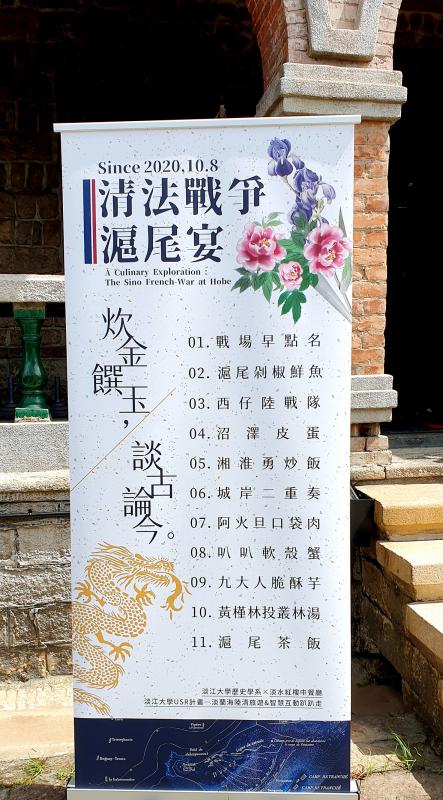
Photo: Katy Hui-wen Hung
“Crossing the Swamp:” This malabar spinach based “thick soup” made with finely chopped preserved eggs, pork, wolfberry and dried fish delivers both flavor and aesthetics. The green soup portrays the intense battlefield and the swampy land covered in paddy fields. Failing to diffuse the Qing’s naval mines, the French made a quick retreat in a boat shown by a flower in a small glass vase in the center of the dish.
Dish 4
“A-ho-da (阿火旦)” pocket meat: Local militia leader Chang Li-cheng (張李成) gathered about 500 Hakka and Aboriginal warriors (who were documented shooting flintlock rifles lying down with the barrel between their toes), pocketing a hard-won victory, hence the braised pork belly in steamed pancake pockets. Chang’s nickname A-ho-da is reportedly an amalgamation of his fiery temperament and his playing of female roles in traditional opera troupes.
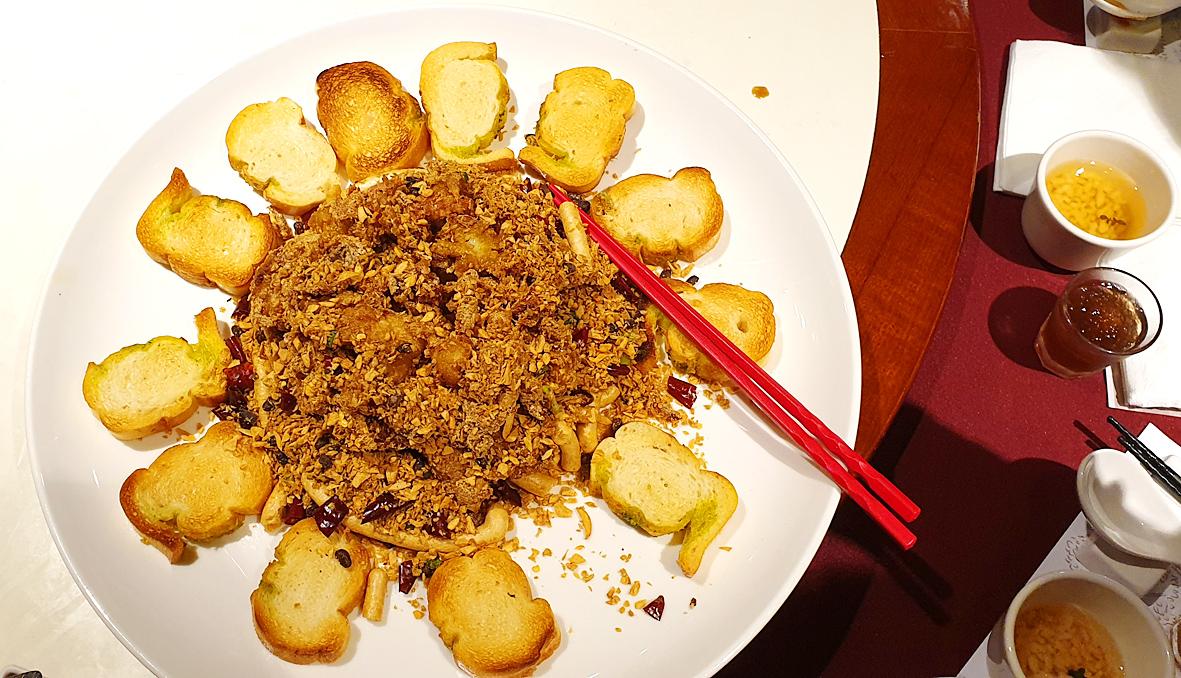
Photo: Katy Hui-wen Hung
Dish 5
“Ba-ba softshell crab:” A heap of fried garlic, ginger and chili surrounded by a circle of toasted bread paints the panicking French encircled by the Qing army. Ba-ba, which approximates the sound of a bugle, refers to the wounded bugler who was unable to deliver the French commander’s orders to ease-up firing and conserve ammunition. The French soldiers’ knees buckled and their legs trembled with fear. Like a softshell crab, they accepted defeat and started to retreat.
Dish 6
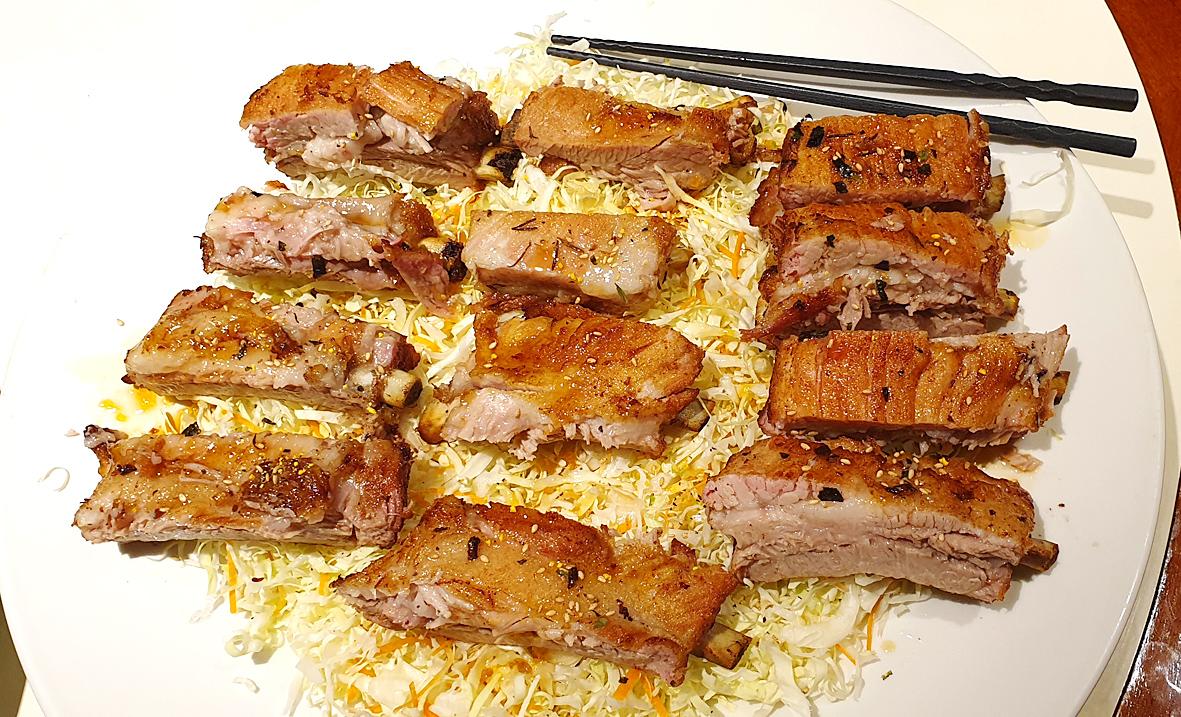
Photo: Katy Hui-wen Hung
Ribs with dijon mustard on cabbage: Upon landing on Shalun Beach (沙崙), the French forces were neatly arranged in lines of 10 squadrons and companies. The ribs are marinated in French mustard and served on shredded cabbage.
Dish 7
Bass with chopped chili: This creation represents the French hopes of catching a fresh fish (Tamsui) only to be taught a bitter lesson, repulsed by the mountains of obstacles (chili) the defenders built.
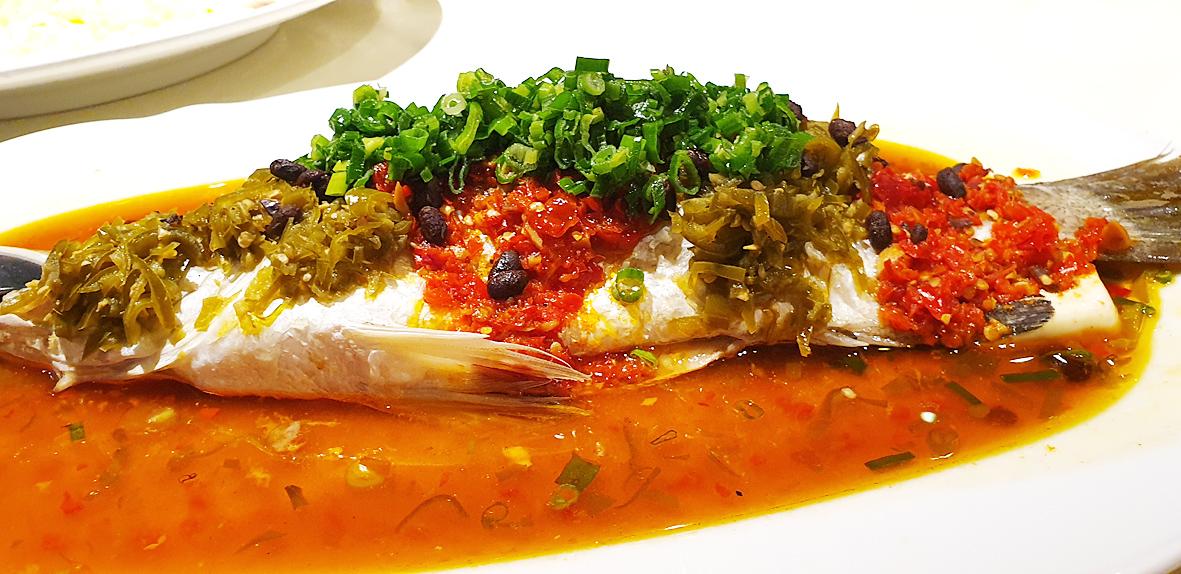
Photo: Katy Hui-wen Hung
Dish 8
“Xiang Army fried rice:” Troops from the Qing’s Xiang (Hunan Province) and Huai (Anhui Province) armies were in charge of defending Taiwan. This tumeric rice dish includes General Tso chicken representing the Xiang and cranberry the Huai, and black sesame the hardy Hunan yong (勇, brave) warriors. It’s said that even the severely wounded yong rushed straight back to the battlefield after being patched up at the local Mackay Clinic, founded by renowned Canadian missionary George Leslie Mackay.
Dish 9
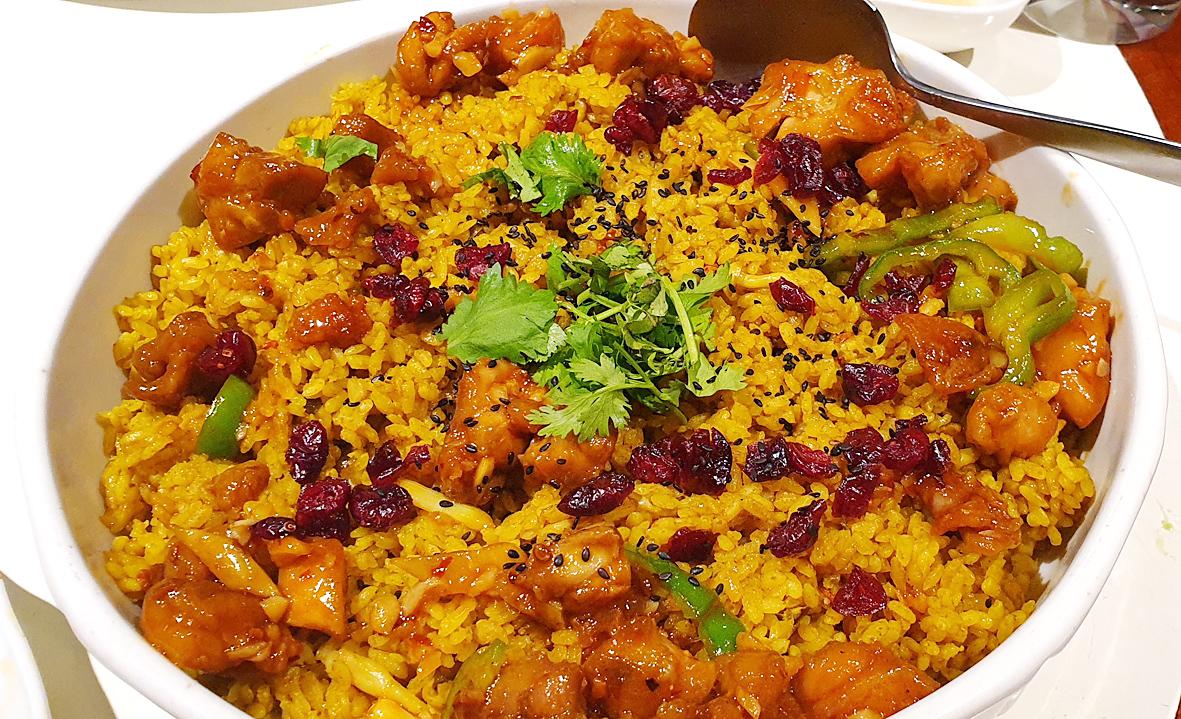
Photo: Katy Hui-wen Hung
“Mangrove soup:” Soon after landing at Shalun Beach, the low growing thorny mangrove bushes and sharp edged screwpines disoriented the French and hindered their advance. These two natural defensive plants form the idea behind the clear soup: Yellow dried daylily and white wood ear fungus represent the screwpine and mangroves, respectively, due to their shapes.
Dish 10
“General’s crispy taro:” The final dish pays tribute to General Sun Kai-hua (孫開華), who led the successful defense of Tamsui. However, Qing imperial commissioner Liu Ming-chuan (劉銘傳), who failed to defend Keelung, tried to steal Sun’s thunder by claiming victory for himself and his faction in official reports, even accusing Sun of dereliction of duty. Taro was reportedly Sun’s favorite food and an important staple in both Tamsui and Sun’s hometown in Hunan. It is served deep-fried, coated in peanut and sesame.

Photo: Katy Hui-wen Hung
TEA INSTEAD OF WINE?
“Hobe tea rice” is a local staple that locals enjoyed in 1884, Lee explains.
It is typically served in a bowl of brown indica rice, which is good for digestion, with tea poured in just before serving.
At the beginning of the banquet, a symbolic tablespoon of polished white rice in a small cup of oolong tea was offered, with tea served throughout the affair.
French gourmands would probably question why wine was not served. The heroic General Sun would too, as he was a known wine lover who was reportedly seen sipping champagne leisurely in the shade of a tree during the French bombardment.

A vaccine to fight dementia? It turns out there may already be one — shots that prevent painful shingles also appear to protect aging brains. A new study found shingles vaccination cut older adults’ risk of developing dementia over the next seven years by 20 percent. The research, published Wednesday in the journal Nature, is part of growing understanding about how many factors influence brain health as we age — and what we can do about it. “It’s a very robust finding,” said lead researcher Pascal Geldsetzer of Stanford University. And “women seem to benefit more,” important as they’re at higher risk of

March 31 to April 6 On May 13, 1950, National Taiwan University Hospital otolaryngologist Su You-peng (蘇友鵬) was summoned to the director’s office. He thought someone had complained about him practicing the violin at night, but when he entered the room, he knew something was terribly wrong. He saw several burly men who appeared to be government secret agents, and three other resident doctors: internist Hsu Chiang (許強), dermatologist Hu Pao-chen (胡寶珍) and ophthalmologist Hu Hsin-lin (胡鑫麟). They were handcuffed, herded onto two jeeps and taken to the Secrecy Bureau (保密局) for questioning. Su was still in his doctor’s robes at

Last week the Democratic Progressive Party (DPP) said that the budget cuts voted for by the China-aligned parties in the legislature, are intended to force the DPP to hike electricity rates. The public would then blame it for the rate hike. It’s fairly clear that the first part of that is correct. Slashing the budget of state-run Taiwan Power Co (Taipower, 台電) is a move intended to cause discontent with the DPP when electricity rates go up. Taipower’s debt, NT$422.9 billion (US$12.78 billion), is one of the numerous permanent crises created by the nation’s construction-industrial state and the developmentalist mentality it

Experts say that the devastating earthquake in Myanmar on Friday was likely the strongest to hit the country in decades, with disaster modeling suggesting thousands could be dead. Automatic assessments from the US Geological Survey (USGS) said the shallow 7.7-magnitude quake northwest of the central Myanmar city of Sagaing triggered a red alert for shaking-related fatalities and economic losses. “High casualties and extensive damage are probable and the disaster is likely widespread,” it said, locating the epicentre near the central Myanmar city of Mandalay, home to more than a million people. Myanmar’s ruling junta said on Saturday morning that the number killed had